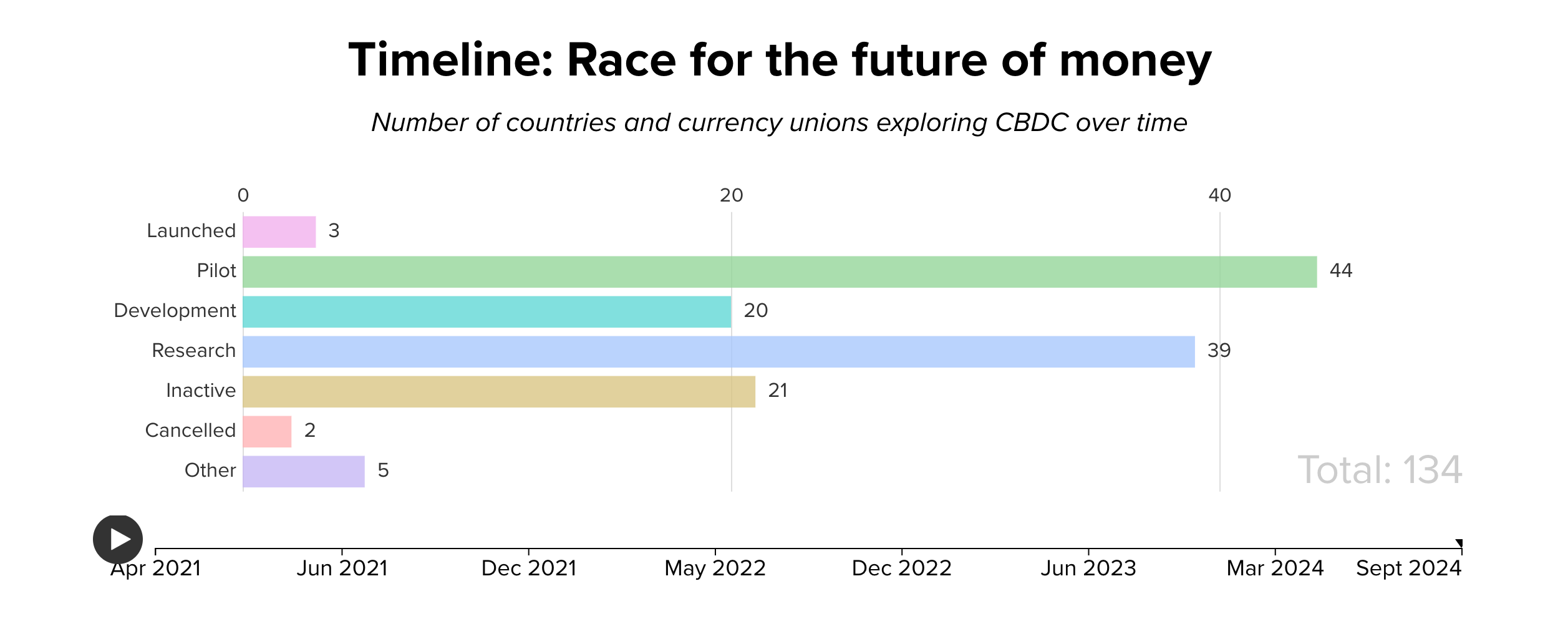and the distribution of digital products.
DM Television
From Dollar Dominance to Digital Power: Is 2025 the Year of State-Backed Cryptos (CBDC)?
It is increasingly evident that 2025 could usher in a new financial era. Major global powers are already vying for dominance in this emerging currency landscape, with each nation aiming to secure its influence in what could become a world of state-backed cryptocurrencies. The prior financial order was built upon the Bretton Woods system, underpinned by the U.S. dollar. While some factions are intent on preserving this status quo, others advocate for a global shift toward a decentralized world of cenral bank digital currencies or CDBCs.
What Was the Bretton Woods System?According to an American Treasury legend, on the night of Sunday, December 14, 1941, less than a week after the United States entered World War II, U.S. Treasury Secretary Henry Morgenthau dreamed of a unified currency system for global trade. On July 1, 1944, representatives from 44 nations convened in the quaint town of Bretton Woods, nestled in the northeastern United States. By July 22, these delegates had signed an agreement known as the Bretton Woods Agreement, marking the beginning of a new global financial order.
\ Some 80 years later, the international system looks very different to what was agreed during that process, much of it having failed or mutated along the way. All the same, American dominance has continued, with the basic tenets that underpinned the agreement still broadly in place. As we shall see, however, they are now under threat like never before.
\ The Bretton Woods system functioned in such a way that correspondent banks worldwide held their accounts in New York, allowing all dollar-based transactions to flow through the U.S. banking system. This system was more than just a payment mechanism; it was a tool of control, a framework of incentives and penalties. By regulating financial transactions, the U.S. could impose sanctions and freeze payments, effectively exerting influence through monetary channels.
What Kind of New Financial World Are We Entering?The essence of the emerging system lies in each nation possessing its own cryptocurrency or CBDC. A Central Bank Digital Currency (CBDC) is the digital form of a country’s fiat currency that is also a claim on the central bank. Instead of printing money, the central bank issues electronic coins or accounts backed by the full faith and credit of the government.
\

\ A global exchange platform would facilitate trades, with each country stating its needs and surpluses. For example, suppose India seeks to purchase technology from the U.S. using "crypto-rupees," but the U.S. is not interested in crypto-rupees. However, the U.S. might want enriched uranium from Russia, for which it needs "crypto-rubles." Russia, in turn, could use crypto-rupees to buy medicines. This web of demands and supplies would operate on an exchange where cryptocurrencies adjust in value according to real-time market conditions.
\ As of writing, 134 countries and currency unions, representing 98% of global GDP, are exploring a CBDC. In May 2020 that number was only 35. Currently, 66 countries are in the advanced phase of exploration—development, pilot, or launch. Worth mentioning that every G20 country is exploring a CBDC, with 19 of them in the advanced stages of CBDC exploration. Of those, 13 countries are already in the pilot stage. This includes Brazil, Japan, India, Australia, Russia, and Turkey.
\ The US is now participating in a cross-border wholesale CBDC project, Project Agorá, with 6 other major central banks. In May, the US House passed a bill prohibiting the direct issuance of a retail CBDC, but the Senate has not acted. CBDC continues to be an issue in the ongoing US presidential campaign.
A Time of ChangeToday, we live in an era of monumental shifts. As everyday individuals deliberate between holding cash or digital assets, the financial and geopolitical landscape is transforming worldwide. The countdown to 2025 brings anticipation—what innovations and disruptions will the year unveil? Will it indeed be the dawn of state-backed cryptocurrencies, redefining how nations trade, transact, and interact on the global stage? Only time will tell.
- Home
- About Us
- Write For Us / Submit Content
- Advertising And Affiliates
- Feeds And Syndication
- Contact Us
- Login
- Privacy
All Rights Reserved. Copyright , Central Coast Communications, Inc.